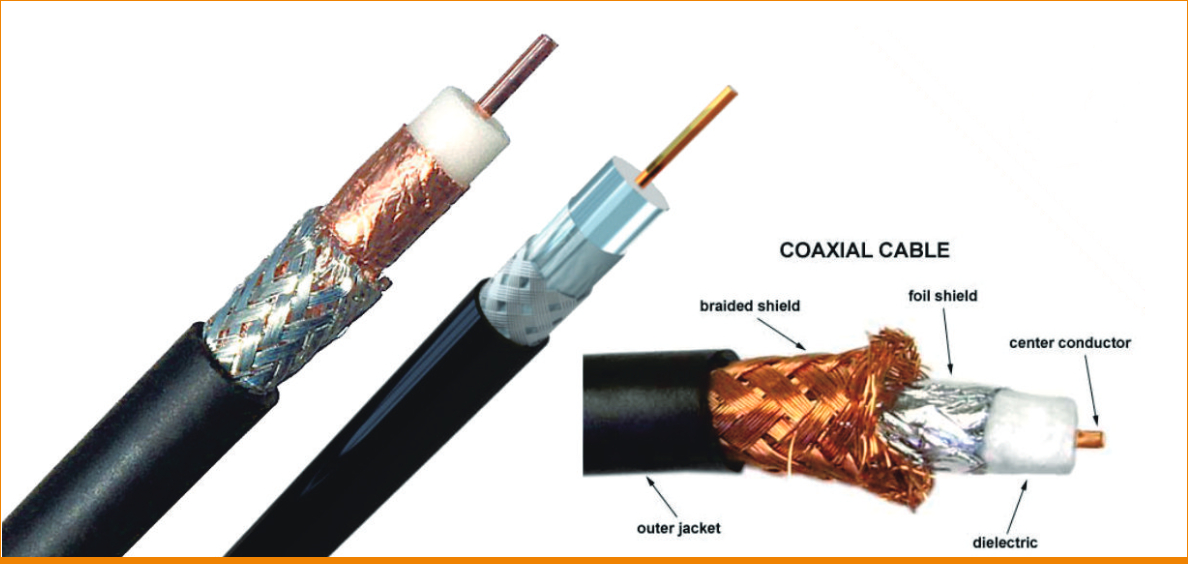Why do we need Co-Axial Cables and how do they work?
In a Co-Axial Cable, an inner conductor is encircled by a circumferential conducting barrier, with the two distinct insulating dielectric (insulating substance); many coaxial cables additionally also have outer protective sheath or jacket. The inner conductor and outer shield share a geometric axis, which is referred to be coaxial. It's an electrical cable featuring a copper conductor, insulator shielding, and a braided metal mesh to reduce signal interference and crosstalk.
A copper conductor serves as the core conductor. The data is transmitted through the conductor. The copper conductor is surrounded by dielectric plastic insulation. It's utilized to keep the center conductor and shield at the same distance. Electromagnetic interference is shielded by a copper braided mesh. The braid acts as a barrier to EMI going into and out of the coaxial cable.
What are the features of high density Co-Axial Cables by Sri Padmavathi Cables?
Polymer Layer - A polymer layer with a plastic covering on the outside.
Interior - It's utilized to keep interior layers safe from harm.
Bandwidth - High-bandwidth high-density Sri Padmavati coaxial cables are available.
Installation - These Coaxial Cables are extremely easy to install.
Resistance - Coaxial cables offer a higher cut-through resistance, making them more dependable and long-lasting.
No interference - Noise, cross-talk, and electromagnetic inference have less of an impact.
Multiple Channels - Multiple channels are supported with coaxial connections.
Padmavati Cables is one of the best Co-Axial Cables manufacturer, Co-Axial Cables exporter, Co-Axial Cables supplier in Mumbai, India. We are serve this Co-Axial Cables in all over countries. If you want this products please quote here!

Standards: Mil-C-17, BS 2316
Solid Copper Center Conductor DIE Electric of Solid PE or Foam PE. Aluminum foil Shielded, Bare Copper or tinned Copper Braiding 95% Coverage. Overall Sheath mainly used for Transmission R.F. Signal the Co-axial Cables are not only the most used Cables but the Least Expensive one in the Market.
This Cables are very Reliable, Convenient and have easily Maintained Way of Transferring Images in a CCTV System. Co-axial Cables is used as a Transmission Line for Digital Video Signal, in Applications Such as Connecting Radio Transmitters and Receivers with their Antennas, Computer Network (Internet Connections) and Distributing Cable Television Signals.
| Cable Type | Conductor Size (mm) | DIA Over Dielectric (mm) | Approx Overall DIA (mm) | Impedance (Ohms) | Attenuation at 200mhz (DB/100m) | Max. R.F. Operating Voltage (kv) | Capacitance PF/FT |
|---|---|---|---|---|---|---|---|
| RG-59 B/U | 0.58 | 3.7 | 6.1 | 75 | 16 | 2.3 RMS | 21.1 |
| RG-59/U | 0.63 | 3.7 | 6.2 | 73 | 16 | 2.3 RMS | 20.6 |
| RG-6/U | 1.04 | 4.6 | 7 | 75 | 9 | 2.7 RMS | 20 |
| RG-11 | 1.61 | 7.1 | 10.3 | 75 | 6 | 5.0 RMS | 20.6 |
| RG-11 A/U | 7/0.41 | 7.25 | 10.3 | 75 | 11 | 5.0 RMS | 20.6 |
| RG-174 U | 7/0.16 | 1.5 | 2.5 | 50 | 40 | 1.5 RMS | 30.5 |
| RG-58/U | 0.81 | 2.95 | 5 | 53.5 | 23 | 1.9 RMS | 28.8 |
| RG-58 C/U | 19/0. 18 | 2.95 | 5 | 50 | 24 | 1.9 RMS | 29.6 |
| RG-223/U (RG-55 A/U) | 0.06 | 2.95 | 5.5 | 50 | 20 | 1.9 RMS | 19.8 |
| RG-213/U (RG-8 A/U) | 7/0.75 | 7.25 | 10.3 | 50 | 11 | 5.0 RMS | 30.8 |
| RG-214/U (RG-9B/U) | 7/0.75 | 7.25 | 10.8 | 50 | 11 | 5.0 RMS | 30.8 |